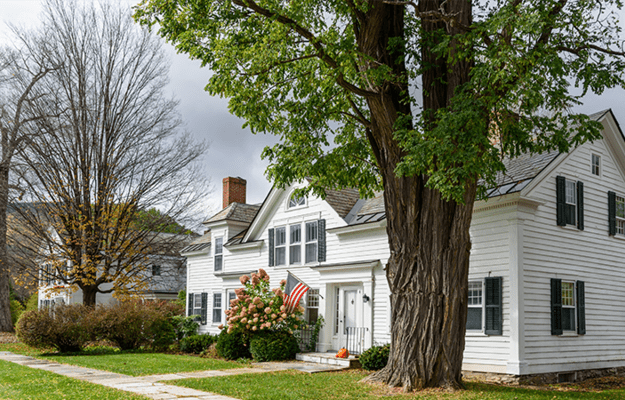
(Jason Finn/Shutterstock)
How Student Loan Debt Affects the Racial Homeownership Gap
The number of people with student loan debt has steadily increased over time, with more than 40 million Americans holding some form of student loan debt in 2022. Recently, the White House announced it will cancel $10,000 of student debt for borrowers earning less than $125,000 for an individual or $250,000 for a couple, and up to $20,000 for Pell grant recipients. This doesn’t just affect borrowers; it could also lead to a more equitable housing market.
As student loan debt has increased, the homeownership rate has decreased markedly, particularly among younger adults. Among people ages 24 to 32, the homeownership rate fell 9 percentage points between 2005 and 2014—nearly double the drop as that for the overall population. This drop is driven by a number of complex factors, including tightening loan standards and an increase in housing costs related to income, but student loan debt is also likely influencing younger buyers as they seek to enter the housing market.
Extensive evidence underscores how debt affects mortgage eligibility and credit score, erecting clear barriers to homeownership. A study by the Federal Reserve Board found that a $1,000 increase in student loan debt lowers the homeownership rate by about 1.8 percent for public four-year college goers; this amounts to an average delay in about four months for attaining homeownership.
Student loan debt may reproduce and exacerbate the racial homeownership gap. Enduring racial disparities in wealth and income—which were, in part, created through decades of racist and discriminatory housing policies that blocked wealth building for many families—mean a greater proportion of Black students need to take on a greater and more enduring financial risk to pursue higher education. Therefore, reducing the impact of student loans on mortgage eligibility could be a critical component of ensuring a more equitable housing landscape.
The link between student loan debt and the racial homeownership gap
A college education doesn’t create income parity, and racial income gaps persist after college. This creates large gaps in how impactful student loans are for people of color.
The persistent and enduring effects of student loans disproportionately limit homeownership possibilities for households of color. Four years after graduation, almost half of Black student borrowers owe more than they initially borrowed, compared with fewer than a quarter of white borrowers. After graduation, Black borrowers have higher debt burdens, express more concern about the affordability of loan payments, and are more likely to default, which has long-term implications on credit and mortgage eligibility. This is layered onto a housing landscape where there is already a large racial homeownership gap.
Though college or university has historically helped create economic mobility, the racial homeownership gap has only slightly narrowed for those with higher educational attainment. Black people with a college degree have lower homeownership rates than white people without a high school diploma.
This historic gap in homeownership creates enduring disparities. Research from the Federal Reserve Bank of St. Louis finds that familial wealth is more likely to help white households receive financial support for a home purchase. Students of color are less likely to have wealth to finance either an education or a home purchase, leading to higher rates of loan debt, which decrease mortgage eligibility and the ability to afford a down payment. Student loan debt is part and parcel of the broader racial wealth gap, acting to reproduce the persistent racial homeownership gap.
The full effects of the Biden administration’s student loan forgiveness policy remain to be seen. But it would be a mistake to assume it will enable more households of color to qualify for mortgages and begin building wealth through homeownership. Organizations and policymakers working to close the racial homeownership gap should focus on how student loan debt (combined with lower earnings and parental wealth) may block homeownership for some people of color and target tools and resources to overcoming this barrier. At the same time, lenders and financial institutions working to make home loans more accessible to people with student loan debt should apply a clear racial equity focus to ensure new programs address the circumstances of people of color and don’t exacerbate the racial wealth and homeownership gaps.


